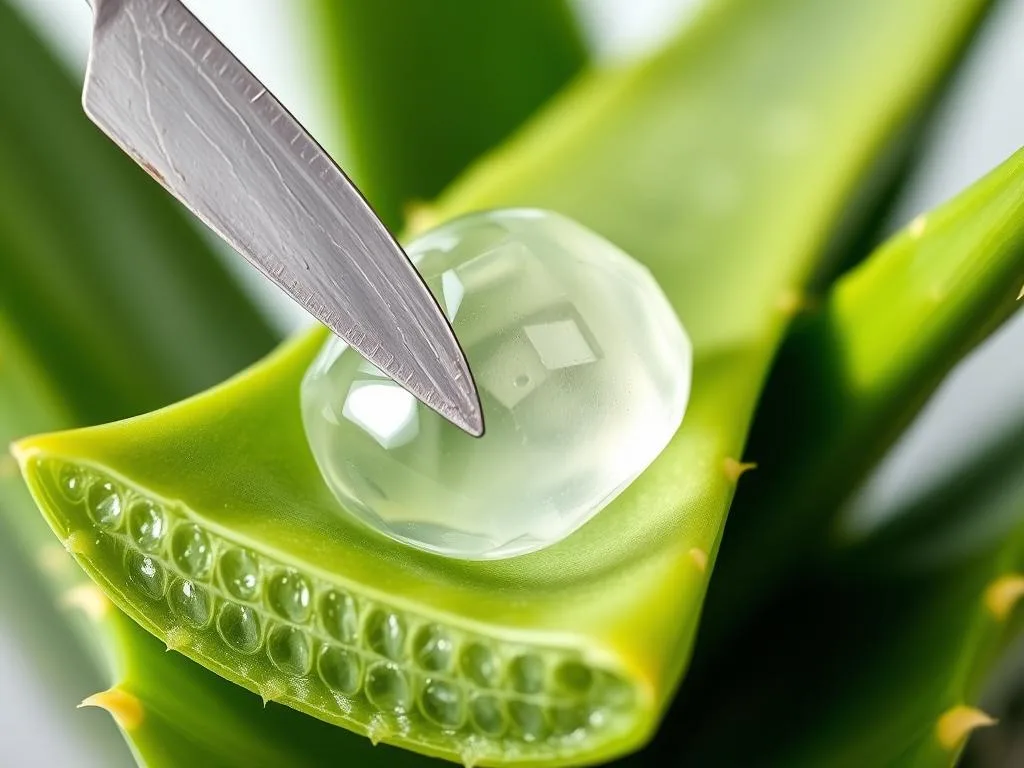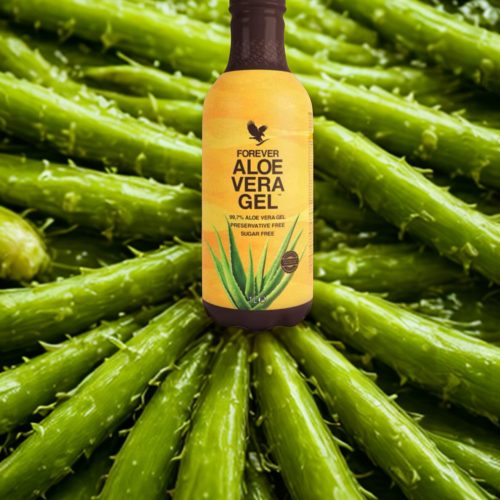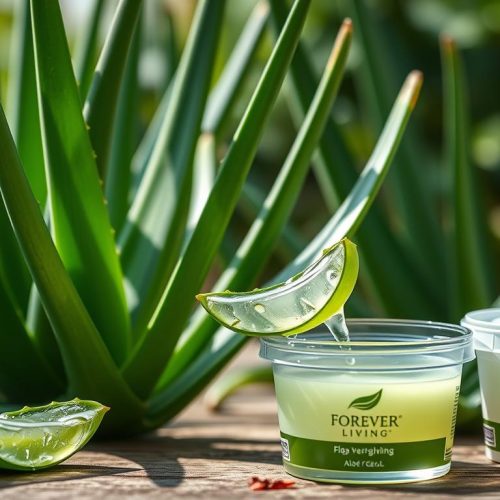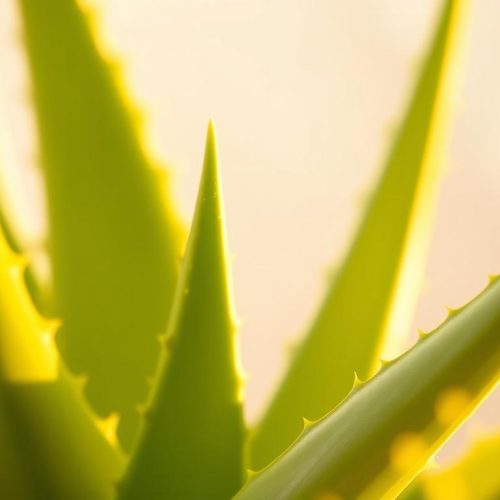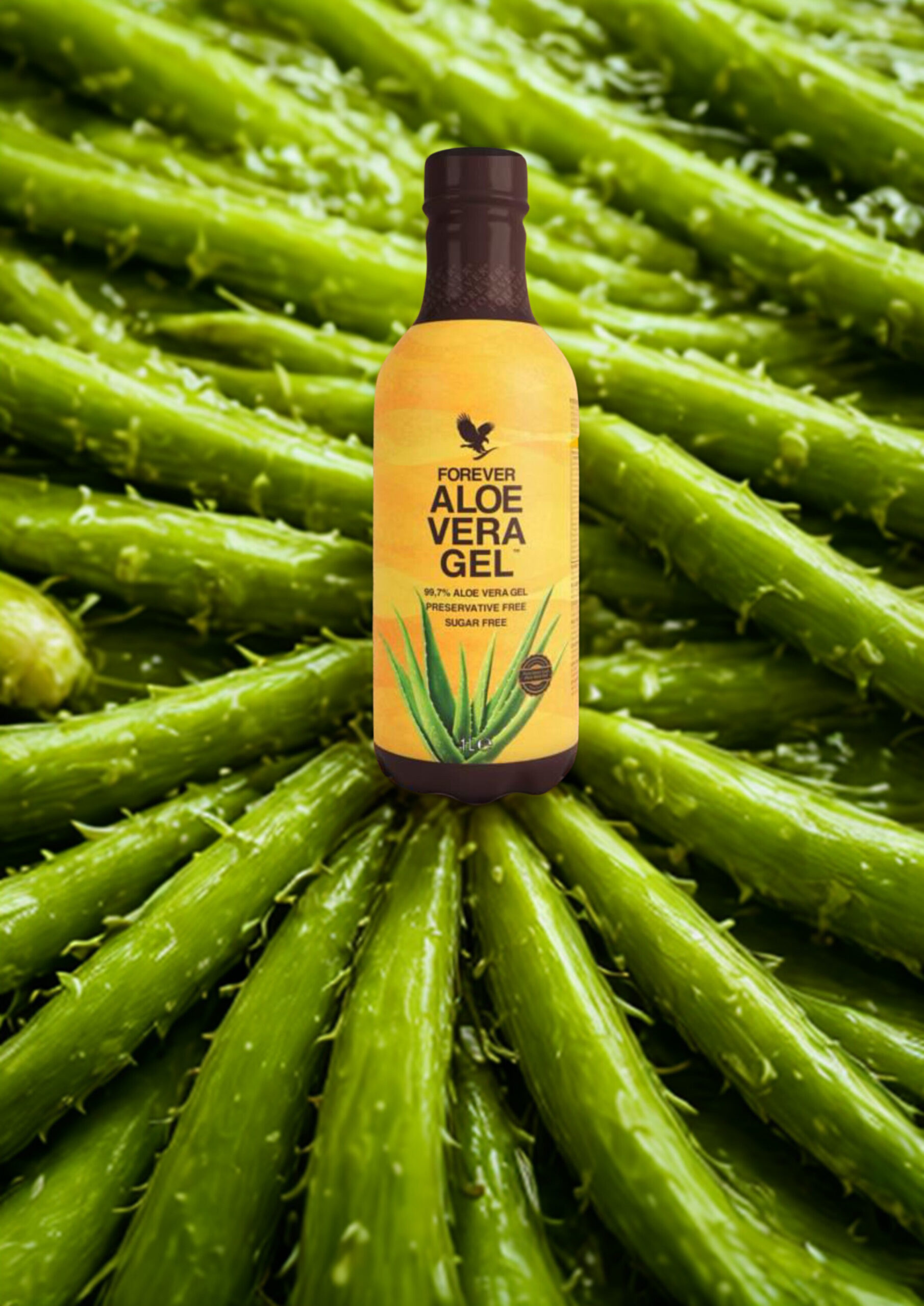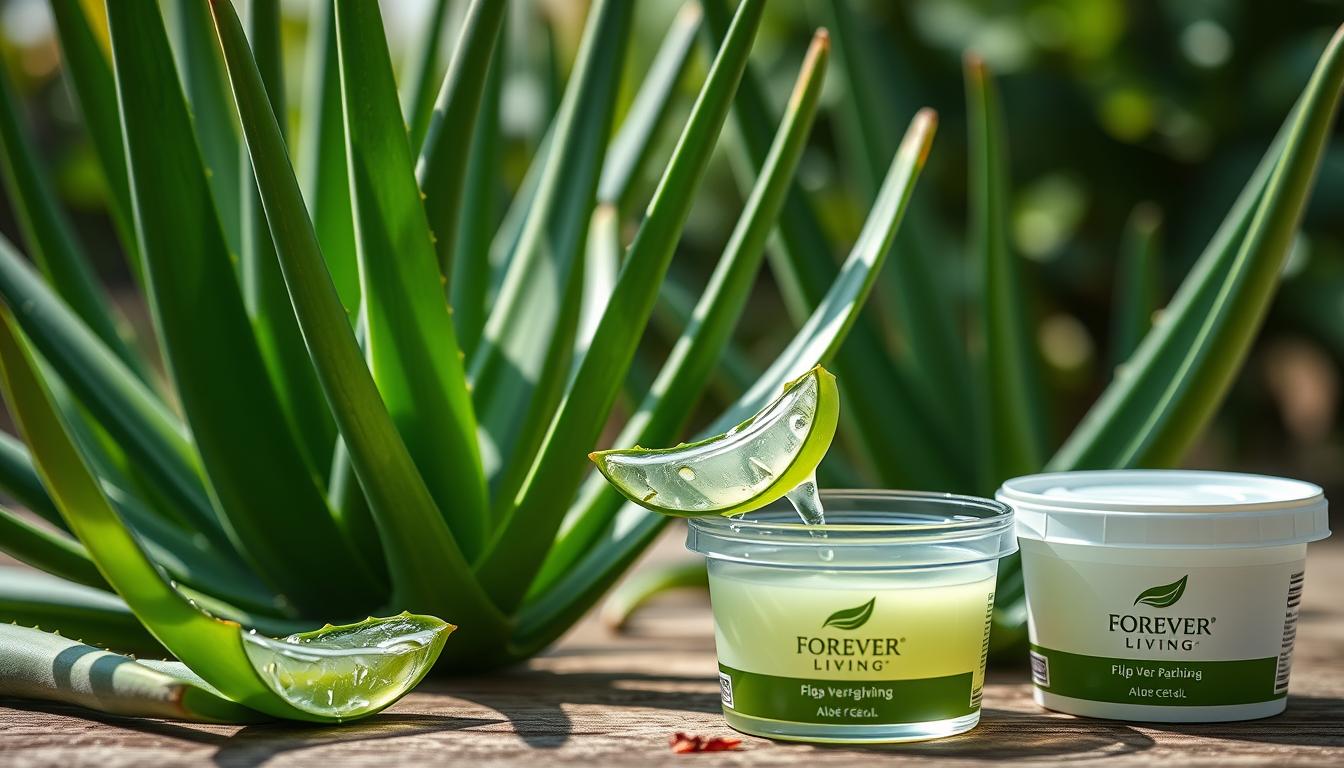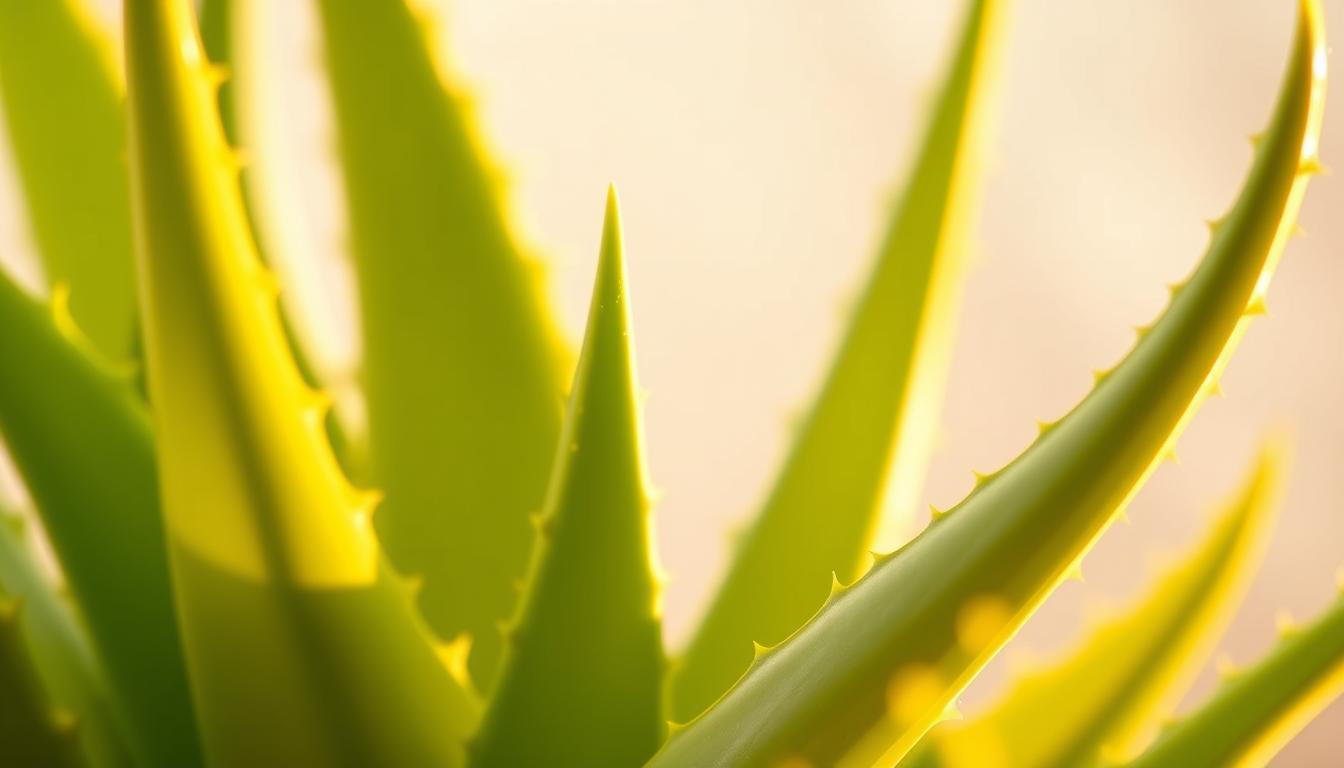Burn recovery has long relied on traditional methods that often fall short in providing optimal healing conditions and real-time monitoring. Today, an innovative solution is emerging at the intersection of nature and technology: the aloe vera smart patch for skin healing. These revolutionary devices combine the time-tested therapeutic properties of aloe vera gel with cutting-edge Internet of Things (IoT) technology, creating a powerful tool that not only delivers healing compounds but also monitors recovery progress in real-time. This breakthrough approach promises to transform burn treatment by personalizing care, reducing complications, and accelerating the healing process.
- Understanding Aloe Vera's Healing Properties
- The Integration of IoT Technology with Natural Healing
- Benefits of Wearable Aloe Vera Patches for Burns
- The Technology Behind Aloe Vera Smart Patches
- Clinical Applications and Case Studies
- Future Applications of Aloe Vera Wearable Skin Sensors
- Implementation and Accessibility
- The Future of Burn Care: A New Paradigm
- Related Resources
- Understanding Aloe Vera's Healing Properties
- The Integration of IoT Technology with Natural Healing
- Benefits of Wearable Aloe Vera Patches for Burns
- The Technology Behind Aloe Vera Smart Patches
- Clinical Applications and Case Studies
- Future Applications of Aloe Vera Wearable Skin Sensors
- Implementation and Accessibility
- The Future of Burn Care: A New Paradigm
- Related Resources
Understanding Aloe Vera's Healing Properties
Aloe vera gel contains over 75 active compounds that promote skin healing and regeneration
For millennia, aloe vera has been revered as nature’s healer for damaged skin. The clear gel found inside aloe vera leaves contains over 75 bioactive compounds including vitamins, enzymes, minerals, sugars, and amino acids that work synergistically to promote healing. Modern research has validated what traditional medicine has known for centuries: aloe vera possesses remarkable therapeutic properties that make it exceptionally effective for treating burns and wounds.
Key Healing Components in Aloe Vera
The healing power of aloe vera stems from its unique composition of compounds that work together to create a comprehensive healing environment. Glucomannan and acemannan, polysaccharides found abundantly in aloe gel, stimulate fibroblast proliferation and collagen production—essential processes for wound repair. Additionally, aloe contains powerful antioxidants like vitamins C and E that neutralize harmful free radicals at the wound site.
Aloe vera’s anti-inflammatory properties are particularly valuable in burn treatment. Compounds such as aloin and anthraquinones reduce inflammation by inhibiting the production of prostaglandins and inflammatory cytokines. This anti-inflammatory action helps minimize swelling, redness, and pain associated with burns while creating optimal conditions for healing.
“Aloe vera not only moisturizes the skin but also penetrates deeply to deliver bioactive compounds that accelerate tissue regeneration, reduce inflammation, and create an antimicrobial barrier against infection.”
Journal of Wound Care Research
The gel’s natural moisturizing properties create an ideal environment for epithelial cell migration and proliferation. Unlike traditional dressings that can adhere to wounds and disrupt new tissue formation when removed, aloe vera maintains optimal hydration while allowing oxygen permeability—a critical balance for efficient healing.
Scientific Evidence Supporting Aloe Vera for Burn Recovery
Clinical studies have consistently demonstrated aloe vera’s efficacy in burn treatment. Research published in the Journal of Dermatological Treatment found that burns treated with aloe vera gel healed nearly 9 days faster than those treated with conventional methods. The gel’s ability to penetrate deeply into the skin allows it to deliver its healing compounds directly to damaged tissues, accelerating the regeneration process while simultaneously reducing the risk of scarring.
Key Benefits of Aloe Vera for Burns: Reduces inflammation, provides pain relief, accelerates epithelialization, maintains optimal wound moisture, creates antimicrobial protection, and minimizes scarring.
The Integration of IoT Technology with Natural Healing

Smart patches combine microelectronics with controlled delivery systems for optimal healing
The revolutionary aspect of these new healing devices lies in their seamless integration of Internet of Things (IoT) technology with aloe vera’s natural healing properties. Smart patches with natural healing ingredients represent a paradigm shift in wound care by transforming passive dressings into active, responsive healing systems that can adapt to the changing needs of the wound environment.
How IoT-Enabled Smart Patches Work
At the core of these innovative devices are miniaturized sensors embedded within a flexible, biocompatible patch that adheres comfortably to the skin. These sensors continuously monitor crucial parameters such as:
- Temperature: Elevated temperatures may indicate infection or inflammation requiring intervention
- pH levels: Changes in wound pH can signal healing progression or complications
- Moisture content: Optimal moisture levels are critical for efficient healing
- Oxygen saturation: Adequate oxygenation is essential for tissue regeneration
- Biomarkers: Detection of specific proteins that indicate infection or healing progress
The data collected by these aloe vera wearable skin sensors is processed by a microcontroller within the patch and transmitted wirelessly to a smartphone application or healthcare provider’s system. This real-time monitoring allows for immediate detection of potential complications and enables timely interventions before problems escalate.
What truly sets these devices apart is their ability to respond autonomously to changing wound conditions. Based on sensor readings, the smart patch can adjust the release rate of aloe vera gel and other therapeutic agents to optimize the healing environment. For example, if sensors detect increasing bacterial activity, the patch can increase the release of antimicrobial compounds within the aloe vera formulation.
Technical Innovation: The latest generation of healing smart patches using aloe gel incorporates biodegradable electronics that gradually dissolve as the wound heals, eliminating the need for removal and preventing disruption to newly formed tissue.
Benefits of Wearable Aloe Vera Patches for Burns
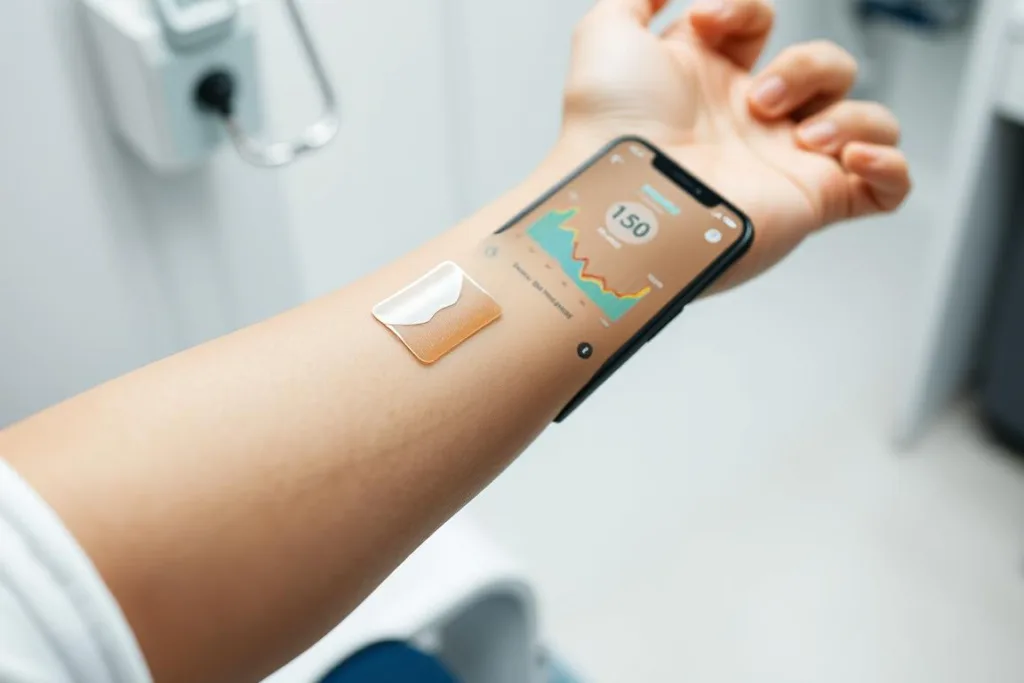
Smart patches provide continuous monitoring and treatment while patients go about their daily activities
Enhanced Healing Efficiency
The combination of aloe vera’s natural healing properties with IoT technology creates a synergistic effect that significantly enhances healing efficiency. The continuous delivery of fresh aloe vera gel directly to the wound site ensures that therapeutic compounds remain active throughout the healing process. Traditional applications require frequent reapplication, with effectiveness diminishing between treatments. In contrast, biotech skincare patches with aloe vera maintain consistent delivery of active compounds, creating optimal conditions for cellular regeneration.
Real-Time Monitoring and Early Intervention
Perhaps the most significant advantage of these smart patches is their ability to provide continuous, real-time monitoring of wound status. This capability transforms reactive wound care into proactive management by enabling early detection of potential complications such as:
- Bacterial infection before visible symptoms appear
- Impaired circulation affecting tissue oxygenation
- Suboptimal moisture levels that could delay healing
- Inflammatory responses requiring intervention
When the system detects concerning changes, it can immediately alert the patient or healthcare provider through the companion smartphone application. This early warning system allows for prompt intervention, potentially preventing serious complications and reducing the need for more intensive treatments or hospitalizations.
For healthcare providers, the data collected by these devices offers unprecedented insights into wound healing progression. The continuous stream of objective measurements creates a comprehensive healing profile that can inform treatment decisions and allow for personalized adjustments to optimize outcomes.
Reduced Infection Risk
Infection represents one of the most serious complications in burn recovery, potentially leading to delayed healing, increased scarring, and in severe cases, life-threatening conditions. Wearable aloe vera patches for burns address this risk through multiple mechanisms:
- Physical barrier: The patch creates a protective seal over the wound, preventing external contaminants from reaching vulnerable tissues
- Antimicrobial properties: Aloe vera naturally contains compounds with antimicrobial activity against common wound pathogens
- Early detection: Sensors can identify markers of bacterial proliferation before infection becomes established
- Targeted intervention: The system can increase release of antimicrobial compounds in response to detected bacterial activity
- Reduced dressing changes: Less frequent need to disturb the wound environment, decreasing opportunities for contamination
- Data-driven decisions: Objective information helps determine when dressing changes are truly necessary
Overall Effectiveness Rating
Patient Comfort and Convenience
Traditional burn dressings often require frequent, painful changes that can disrupt the healing process and cause significant discomfort. Healing smart patches using aloe gel are designed for extended wear, dramatically reducing the frequency of dressing changes. The flexible, lightweight design conforms to body contours, allowing for natural movement without restriction or discomfort.
The companion smartphone application provides patients with easy access to information about their healing progress, empowering them to take a more active role in their recovery. Push notifications can remind patients of important care instructions or alert them to potential issues requiring attention, improving adherence to treatment protocols and ultimately enhancing outcomes.
The Technology Behind Aloe Vera Smart Patches
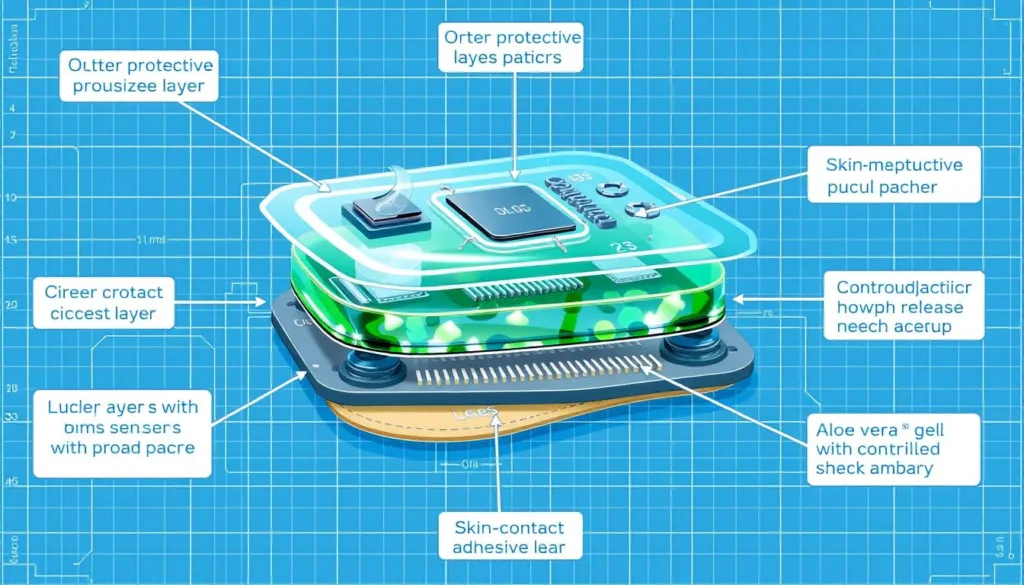
The multi-layered design incorporates sensors, processors, and controlled-release mechanisms
Advanced Sensor Array
The foundation of these innovative devices is an advanced array of miniaturized sensors that continuously monitor the wound environment. These sensors are fabricated using flexible electronics technology that allows them to conform to the skin’s surface without causing discomfort or restricting movement. The sensor array typically includes:
- Temperature sensors: Precision thermistors capable of detecting temperature changes as small as 0.1°C
- pH sensors: Electrochemical sensors that measure the acidity or alkalinity of wound exudate
- Moisture sensors: Impedance-based sensors that quantify the hydration level of the wound environment
- Oxygen sensors: Optical sensors that measure oxygen saturation in the wound bed
- Biomarker detectors: Specialized sensors that can identify specific proteins associated with inflammation, infection, or healing
- Pressure sensors: Detect excessive pressure that could impair circulation to the wound area
Controlled Delivery System
The aloe vera gel delivery system represents a significant advancement over traditional wound dressings. Rather than simply applying a static layer of gel, these patches incorporate a controlled release mechanism that can adjust the delivery rate based on wound conditions. This system typically consists of:
- Gel reservoir: A biocompatible chamber containing stabilized aloe vera gel formulation
- Microfluidic channels: Precisely engineered pathways that control the flow of gel to the wound surface
- Actuators: Micro-electromechanical systems that regulate the release rate in response to sensor data
- Permeable membrane: Allows for controlled diffusion of active compounds while preventing bacterial infiltration
Data Processing and Connectivity
At the heart of these biotech skincare patches with aloe vera is a low-power microprocessor that analyzes data from the sensor array and controls the delivery system. This processor runs sophisticated algorithms that can identify patterns indicative of healing progress or potential complications. The system’s artificial intelligence capabilities allow it to learn from accumulated data, becoming increasingly accurate in its assessments over time.
Connectivity is provided through Bluetooth Low Energy (BLE) or similar wireless technologies that allow the patch to communicate with a smartphone or other devices while consuming minimal power. This wireless connection transmits real-time data to the companion application and can receive instructions for adjusting treatment parameters.
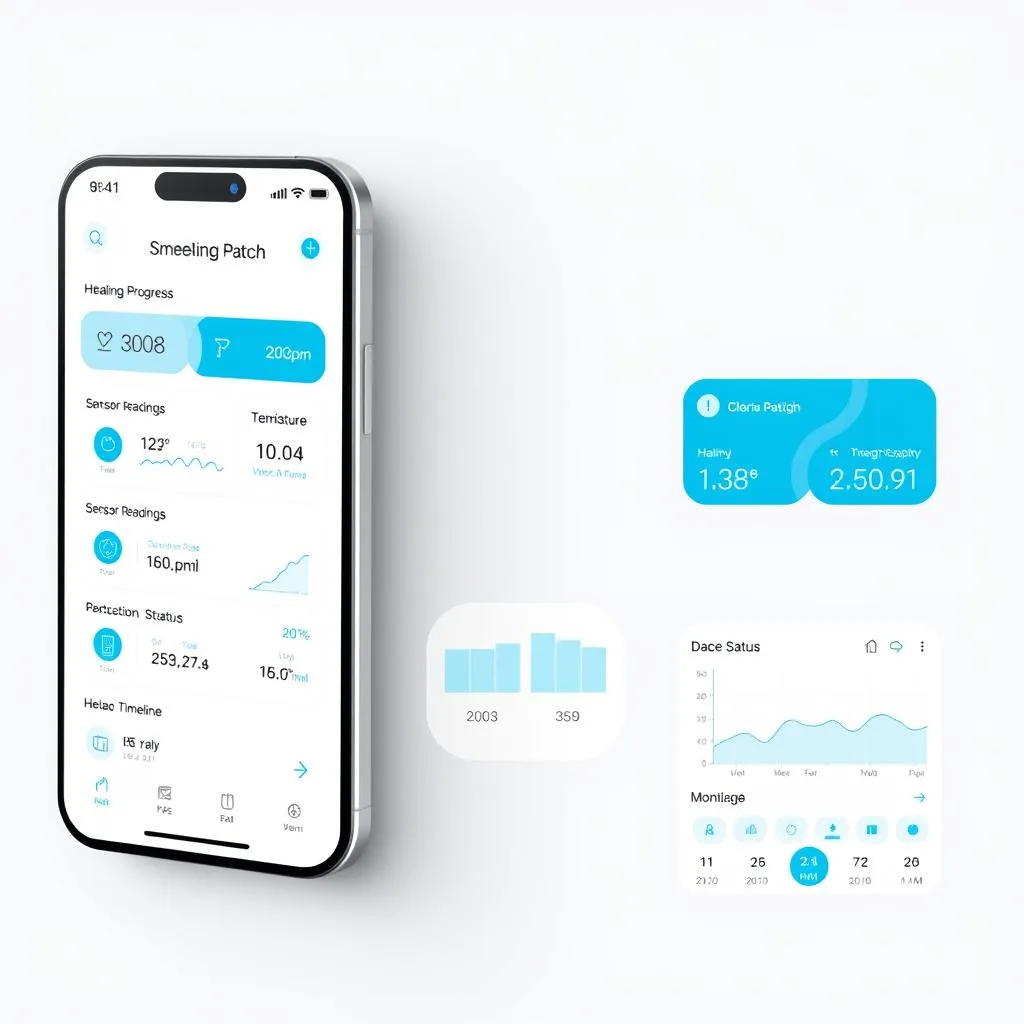
The companion app provides real-time monitoring and alerts
Power Management
Efficient power management is crucial for these devices to function effectively over extended periods. Most aloe vera wearable skin sensors employ a combination of ultra-low-power components and energy harvesting technologies to maximize operational life. Some advanced models incorporate thin-film batteries or even utilize the body’s own bioelectrical energy to power their operations, eliminating the need for conventional batteries entirely.
| Component | Function | Technology | Advancement |
| Sensor Array | Monitors wound environment | Flexible electronics | Miniaturization allowing for non-intrusive monitoring |
| Microprocessor | Data analysis and system control | Low-power ARM architecture | AI-enhanced algorithms for predictive analysis |
| Delivery System | Controlled release of aloe vera | Microfluidics | Responsive delivery based on real-time wound conditions |
| Connectivity | Data transmission | Bluetooth Low Energy | Secure, encrypted transmission of medical data |
| Power Source | Energy provision | Thin-film batteries/Bioenergy harvesting | Extended operational life without recharging |
| Adhesive Layer | Secure attachment to skin | Biocompatible hydrocolloids | Gentle adhesion that prevents skin damage |
Clinical Applications and Case Studies
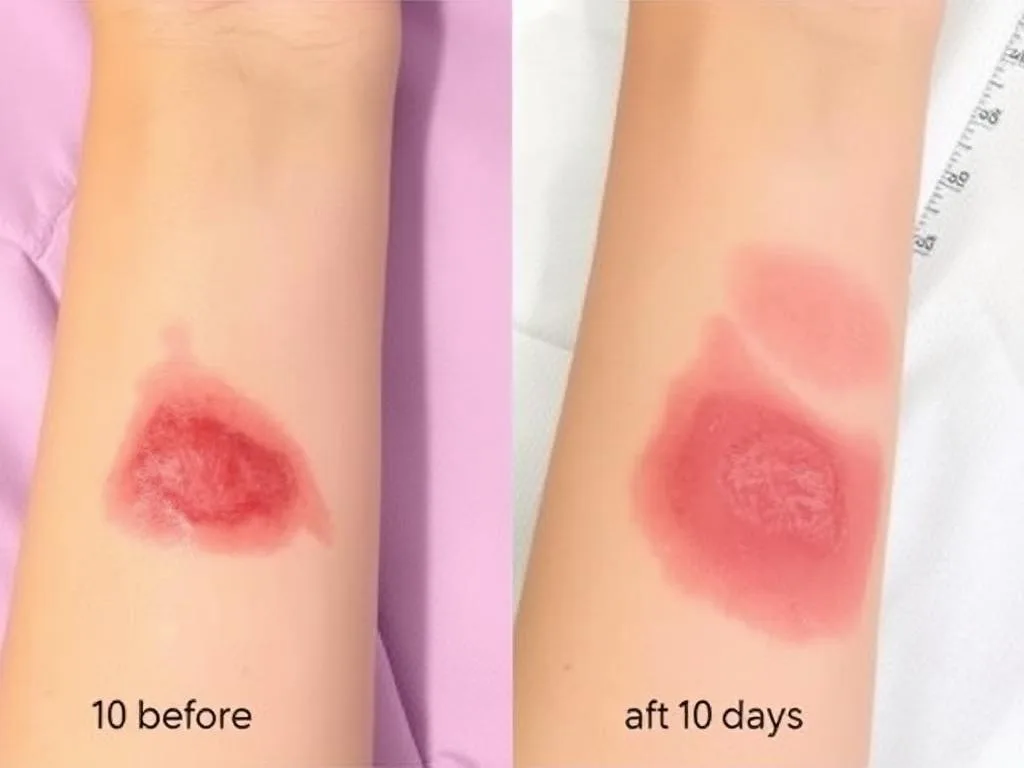
Significant improvement in burn healing after 10 days of smart patch treatment
Second-Degree Burn Recovery
A recent clinical trial conducted at the Northwestern University Burn Center evaluated the efficacy of IoT-enabled aloe vera patches in treating second-degree burns. The study involved 120 patients randomly assigned to receive either standard burn care or treatment with the smart patches. Results showed that patients in the smart patch group experienced:
- 42% faster re-epithelialization (formation of new skin)
- 68% reduction in infection rates compared to the control group
- Significantly lower pain scores throughout the recovery process
- Earlier return to normal activities (average of 5.3 days sooner)
- Higher overall satisfaction with the treatment experience
The study also found that the continuous monitoring capability of the patches allowed for early intervention in several cases where infection was developing but had not yet become clinically apparent, potentially preventing serious complications.
Chronic Wound Management
Beyond acute burns, healing smart patches using aloe gel have shown promising results in managing chronic wounds such as diabetic ulcers and pressure sores. These conditions present unique challenges due to impaired healing mechanisms and high susceptibility to infection.
A six-month observational study at the Cleveland Clinic followed 85 patients with diabetic foot ulcers who were treated with IoT-enabled aloe vera patches. The results were remarkable, with 78% of wounds achieving complete closure compared to the typical 31% closure rate with standard care protocols. The real-time monitoring capability proved particularly valuable for these patients, many of whom had reduced sensation in their extremities and were unable to detect early signs of complications.
“The smart patch system allowed us to detect subtle changes in wound status days before they would have been clinically apparent. This early warning capability fundamentally changes our approach to chronic wound management.”
Dr. Elena Rodriguez, Lead Researcher, Cleveland Clinic
Pediatric Applications
Children with burns present special challenges in wound management, including difficulty keeping traditional dressings in place and heightened anxiety during dressing changes. A pilot study at Boston Children’s Hospital evaluated the use of wearable aloe vera patches for burns in pediatric patients aged 2-12 years.
The study reported not only improved healing outcomes but also significant psychosocial benefits. The reduced need for frequent, painful dressing changes decreased trauma associated with burn care, while the companion app’s gamified interface helped children engage positively with their treatment. Parents reported high satisfaction with the ability to monitor their child’s healing progress remotely, reducing anxiety between clinical visits.

Child-friendly versions of the smart patches incorporate engaging designs and gamified monitoring
Future Applications of Aloe Vera Wearable Skin Sensors

Research continues to expand the applications of smart healing technology
The current applications of IoT-enabled aloe vera patches represent just the beginning of what this technology could achieve. Researchers and biomedical engineers are actively exploring expanded capabilities and new use cases that could revolutionize various aspects of dermatological care and wound management.
Personalized Formulation Delivery
Next-generation biotech skincare patches with aloe vera are being developed with multiple reservoirs containing different therapeutic agents that can be released in precise combinations based on individual wound needs. This approach would allow for truly personalized treatment protocols that adapt not only to the general wound type but to the specific biochemical profile of each patient’s healing process.
For example, a patch might contain separate reservoirs for:
- Aloe vera gel with enhanced antimicrobial properties
- Growth factors to stimulate tissue regeneration
- Anti-inflammatory compounds for pain and swelling management
- Specialized enzymes for debridement of necrotic tissue
- Vasodilators to improve circulation in the wound bed
The system would analyze the wound environment in real-time and release the optimal combination of these agents at precisely the right time to maximize healing efficiency.
Integration with Telemedicine
The remote monitoring capabilities of smart patches with natural healing ingredients are perfectly aligned with the growing trend toward telemedicine. Future systems will likely feature enhanced integration with telehealth platforms, allowing healthcare providers to remotely adjust treatment parameters and conduct virtual wound assessments based on real-time data.
This integration could dramatically improve access to specialized wound care for patients in rural or underserved areas. Rather than requiring frequent in-person visits to specialists, patients could receive expert care through a combination of the smart patch system and periodic virtual consultations, with in-person visits reserved for specific interventions that cannot be performed remotely.
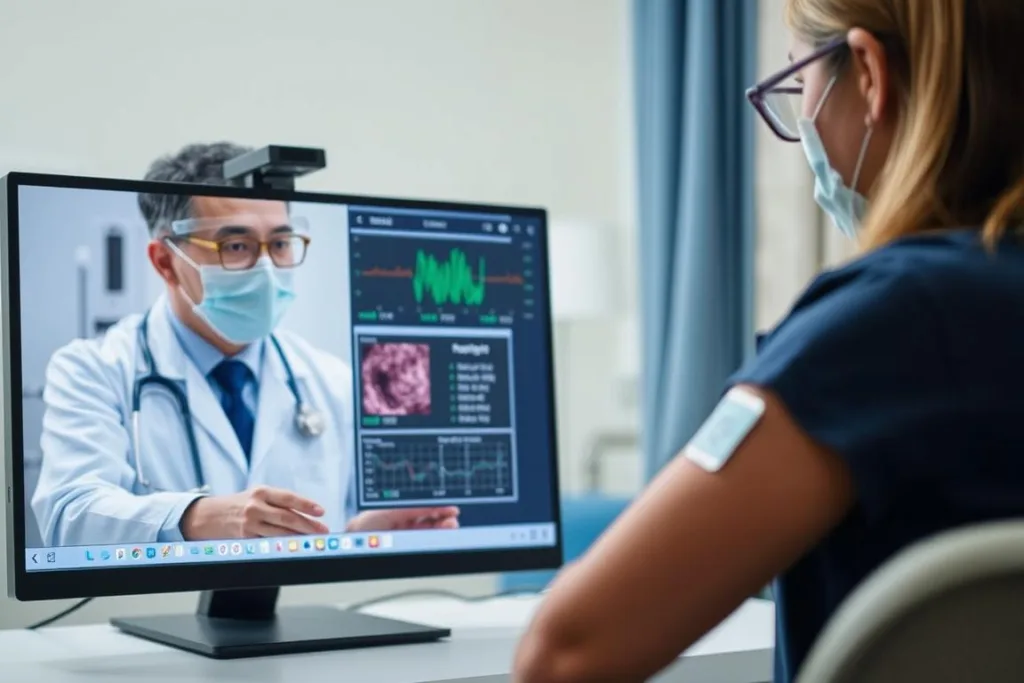
Telemedicine integration allows for remote expert consultation
Expanded Dermatological Applications
While current applications focus primarily on burns and chronic wounds, the technology behind aloe vera wearable skin sensors has potential applications across a wide range of dermatological conditions:
Inflammatory Skin Disorders
Conditions such as psoriasis and eczema could benefit from smart patches that monitor inflammatory markers and deliver anti-inflammatory compounds precisely when and where they’re needed. The continuous monitoring capability could help identify triggers for flare-ups and optimize treatment protocols.
Post-Surgical Wound Monitoring
Following surgical procedures, smart patches could provide early warning of potential complications such as infection or dehiscence (wound separation). This application could be particularly valuable for outpatient surgeries where patients recover at home without direct medical supervision.
Acne Treatment
Smart patches could revolutionize acne treatment by monitoring sebum production, bacterial activity, and inflammation levels, then delivering appropriate treatment agents such as aloe vera (for inflammation), salicylic acid (for exfoliation), or benzoyl peroxide (for bacterial control) as needed.
Scar Management
Post-healing scar management could be enhanced through patches that monitor collagen formation and deliver compounds that promote proper remodeling, potentially reducing hypertrophic or keloid scarring that can occur after burns or surgical procedures.
Integration with Artificial Intelligence
The future of healing smart patches using aloe gel will likely involve increasingly sophisticated artificial intelligence capabilities. As these systems collect data from thousands of patients, machine learning algorithms will identify subtle patterns that human observers might miss, potentially leading to new insights about the wound healing process itself.
AI-enhanced systems could predict healing trajectories with remarkable accuracy, allowing for proactive interventions before complications develop. They might also identify previously unknown correlations between specific biomarkers and healing outcomes, opening new avenues for treatment optimization.
Research Challenge: One of the primary challenges in advancing this technology is developing sensors that remain accurate and reliable in the complex, dynamic environment of a healing wound. Researchers are exploring novel materials and calibration techniques to address this challenge.
Implementation and Accessibility
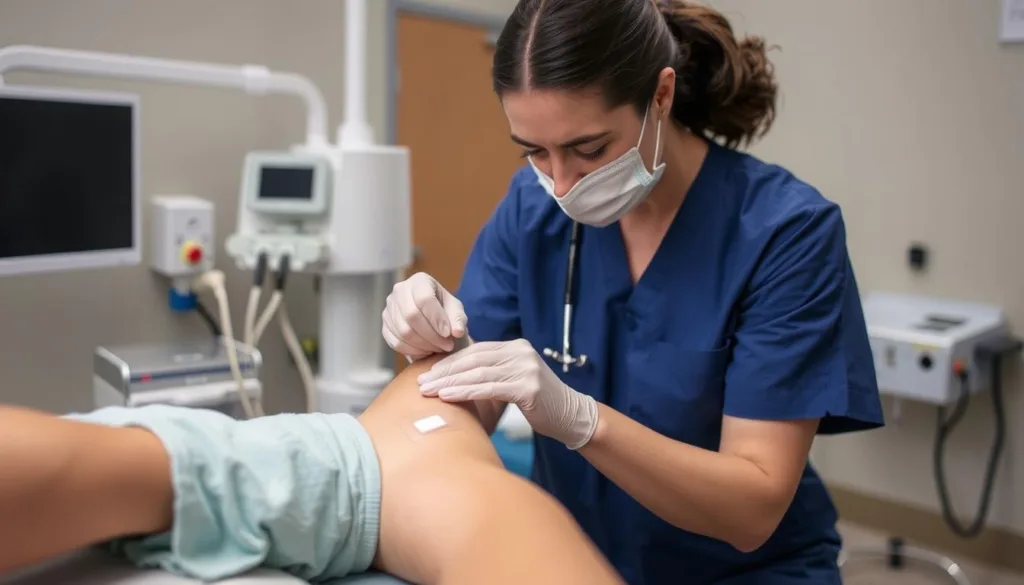
Healthcare professionals can easily apply smart patches in clinical or home settings
Current Availability and Cost Considerations
As with many emerging medical technologies, IoT-enabled aloe vera smart patches are currently in various stages of clinical testing and regulatory approval. Several versions have received FDA clearance for specific applications, while others remain in investigational status. The technology is becoming increasingly available through specialized wound care centers and burn units, with broader distribution expected as manufacturing scales up and costs decrease.
Current cost estimates for these advanced healing systems range from $75-$200 per patch, depending on complexity and duration of use. While this represents a higher initial cost than traditional dressings, several economic analyses have demonstrated overall cost savings when considering:
- Reduced frequency of dressing changes (fewer supplies and less clinical time)
- Lower incidence of complications requiring additional treatment
- Shorter overall healing time and faster return to normal activities
- Reduced need for in-person clinical visits due to remote monitoring capabilities
Many insurance providers have begun covering these devices for specific indications, recognizing their potential to reduce overall treatment costs while improving outcomes. Advocacy groups are working to expand coverage to ensure that patients who would benefit most from this technology can access it regardless of financial circumstances.
Home Use and Patient Education
One of the most promising aspects of wearable aloe vera patches for burns is their potential for safe, effective use in home settings. The intuitive design and companion applications make it possible for patients or caregivers to apply and monitor these devices with minimal specialized training.
Comprehensive educational resources are being developed to support home use, including:
- Video tutorials demonstrating proper application techniques
- Interactive guides for interpreting monitoring data
- Clear guidelines for when to seek additional medical attention
- Troubleshooting resources for common technical issues
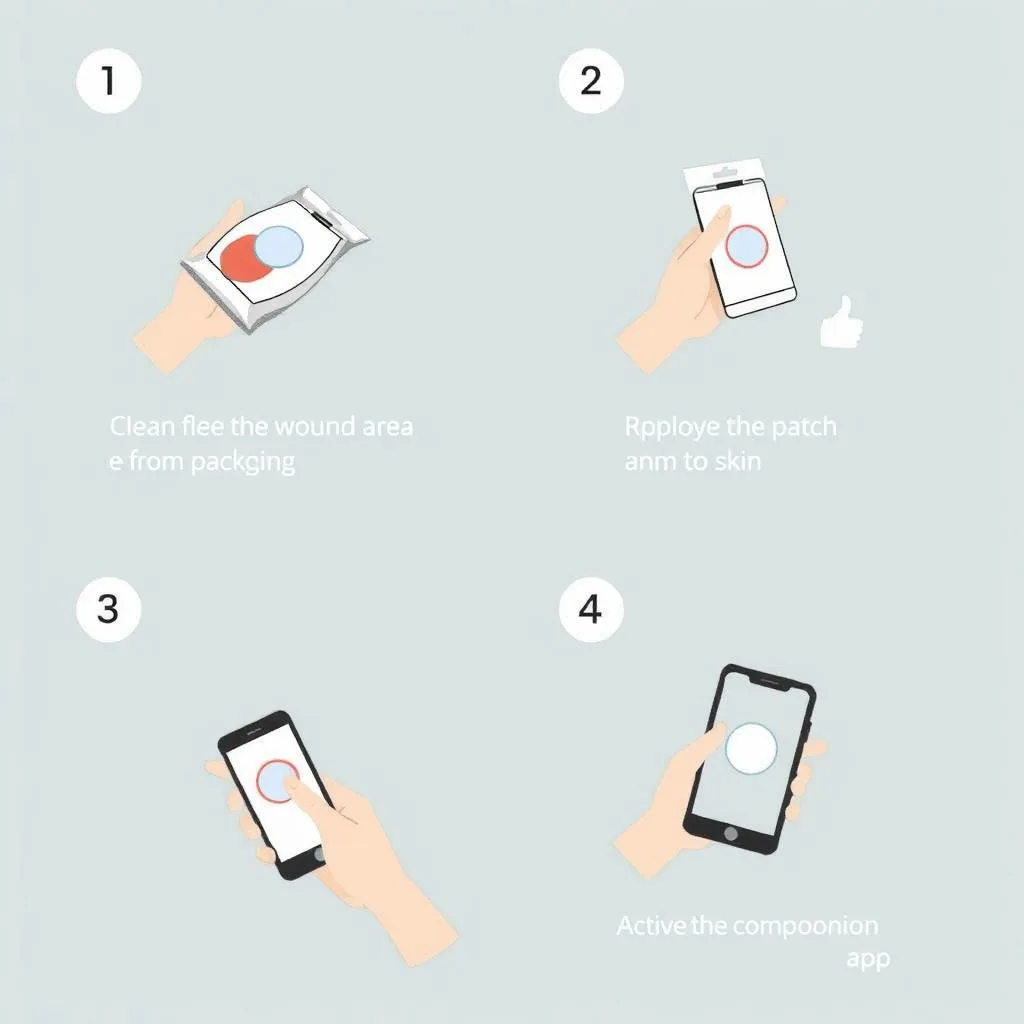
Clear instructions ensure proper application and use
These resources are designed to empower patients to take an active role in their healing process while ensuring that the technology is used safely and effectively. The companion applications also typically include direct communication channels to healthcare providers, allowing patients to quickly obtain guidance when needed.
How long can a single smart patch be worn?
Most current-generation smart patches are designed to remain effective for 5-7 days, though this can vary based on the specific product and wound conditions. The companion app will typically notify users when it’s time to replace the patch. Some advanced models can function effectively for up to 14 days before requiring replacement.
Are these patches waterproof?
Most biotech skincare patches with aloe vera are water-resistant, allowing for brief exposure to water during normal hygiene activities. However, prolonged submersion is typically not recommended. Some newer models offer enhanced waterproofing that allows for showering or bathing without concerns about functionality or adhesion.
Can smart patches be used on all types of burns?
Smart patches are generally indicated for first-degree and superficial second-degree burns. Deep second-degree or third-degree burns typically require specialized medical care and may not be appropriate for smart patch therapy until later stages of healing. Always consult a healthcare provider for proper assessment and treatment recommendations for serious burns.
The Future of Burn Care: A New Paradigm

Research continues to advance smart patch technology for increasingly sophisticated applications
The integration of IoT technology with the time-tested healing properties of aloe vera represents a significant paradigm shift in burn care and wound management. By transforming passive dressings into active, responsive healing systems, these innovative devices address many of the limitations that have long challenged traditional approaches to wound treatment.
The ability to continuously monitor healing progress, detect complications before they become clinically apparent, and deliver therapeutic agents precisely when and where they’re needed creates unprecedented opportunities to optimize the healing environment. For patients, this translates to faster recovery, reduced pain, lower risk of complications, and an overall improved treatment experience.
As this technology continues to evolve and become more accessible, we can anticipate even greater advances in personalization, integration with broader healthcare systems, and expansion into new therapeutic areas. The convergence of natural healing wisdom with cutting-edge technology exemplifies the kind of innovative thinking that will shape the future of healthcare—combining the best of traditional knowledge with modern scientific capabilities to create solutions that are greater than the sum of their parts.
Explore the Future of Skin Healing Technology
Discover how IoT-enabled aloe vera smart patches are transforming burn recovery and wound management. Learn more about this revolutionary approach to healing that combines nature’s remedies with advanced technology.
For Healthcare Professionals
Request information about incorporating biotech skincare patches with aloe vera into your clinical practice. Access research data, implementation guidelines, and patient education resources.
For Patients and Caregivers
Learn how wearable aloe vera patches for burns can help you or your loved one recover faster with less pain and reduced risk of complications. Find out about availability and insurance coverage.
Related Resources
Healing Smart Patches Using Aloe Gel
Explore the science behind how smart patches deliver aloe vera’s healing compounds directly to damaged skin while monitoring recovery progress.
Wearable Aloe Vera Patches for Burns
Discover how wearable technology is revolutionizing burn treatment by combining traditional healing ingredients with advanced monitoring capabilities.
Aloe Vera Wearable Skin Sensors
Learn about the cutting-edge sensor technology that allows smart patches to monitor healing progress and adjust treatment in real-time.
